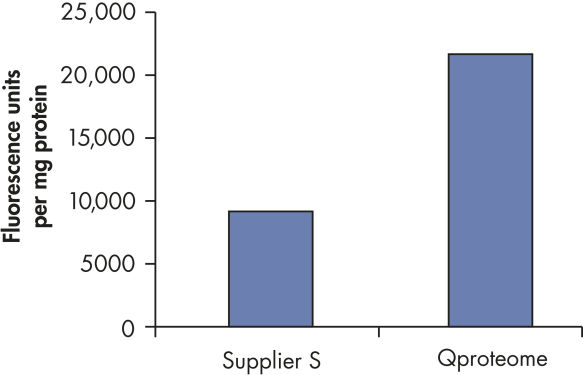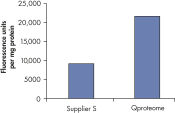✓ Traitement automatique des commandes en ligne 24 h/24 7 j/7
✓ Assistance technique et produits pertinente et professionnelle
✓ Commande (ou réapprovisionnement) rapide et fiable
Qproteome Mitochondria Isolation Kit
Cat. No. / ID: 37612
✓ Traitement automatique des commandes en ligne 24 h/24 7 j/7
✓ Assistance technique et produits pertinente et professionnelle
✓ Commande (ou réapprovisionnement) rapide et fiable
Caractéristiques
- Mitochondries intactes d’une grande pureté
- Grande reproductibilité avec une procédure standardisée
- Format de kit pratique, rapide et facile à utiliser
Détails produit
Le Qproteome Mitochondria Isolation Kit permet d’effectuer des préparations mitochondriales parfaitement actives d’une très grande pureté, dans une procédure standardisée rapide et reproductible, à l’aide d’une centrifugeuse de paillasse standard.
Performances
Voir les illustrations
Principe
L’un des principaux problèmes des chercheurs travaillant sur les mitochondries est la séparation performante des fractions mitochondriales et cytosoliques. Les méthodes de préparation classiques sont fastidieuses, chronophages et nécessitent l’utilisation d’une ultracentrifugeuse. Le Qproteome Mitochondria Isolation Kit permet d’effectuer des préparations mitochondriales parfaitement actives d’une très grande pureté, dans une procédure standardisée rapide et reproductible, à l’aide d’une centrifugeuse de paillasse standard.
Applications
Les mitochondries font l’objet d’études approfondies dans un certain nombre de domaines, notamment l’apoptose, la protéomique, la recherche biomédicale et la découverte de nouveaux médicaments. Le Qproteome Mitochondria Isolation Kit donne des mitochondries d’une grande pureté dont les protéines conservent leur conformation native et leur pleine activité biologique, ainsi sont-elles tout à fait adaptées aux études sur l’apoptose, à l’analyse de 2D-PAGE et à d’autres dosages biochimiques.
Données et illustrations utiles
Davantage de mitochondries intactes par milligramme de protéine.
Les mitochondries ont été isolées avec le Qproteome Mitochondria Isolation Kit ou un autre kit du commerce (fournisseur S) conformément aux consignes du fabricant. L’intégrité de la membrane mitochondriale est indiquée par la formation d’agrégats fluorescents après l’ajout d’un colorant de carbocyanine.

Specifications
| Features | Specifications |
|---|---|
| Applications | SDS-PAGE, spectrométrie de masse, dosages d’activité |
| Sample size | 5 × 10e6 à 2 × 10e7 cellules, 20 mg à 60 mg |
| For glycoproteins: which type of glycoproteins | n.d |
| Binding capacity/yield | 20 à 80 µg |
| Species | Eucaryotes |
| Fractions isolated | Une fraction |
| Start material | Cellules, tissus |




